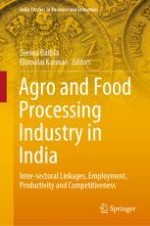2021 | OriginalPaper | Buchkapitel
14. Protection Structure and Comparative Advantage in Primary and Processed Agriculture Exports
verfasst von : Abhishek Jha, Seema Bathla
Erschienen in: Agro and Food Processing Industry in India
Verlag: Springer Singapore
Aktivieren Sie unsere intelligente Suche, um passende Fachinhalte oder Patente zu finden.
Wählen Sie Textabschnitte aus um mit Künstlicher Intelligenz passenden Patente zu finden. powered by
Markieren Sie Textabschnitte, um KI-gestützt weitere passende Inhalte zu finden. powered by
